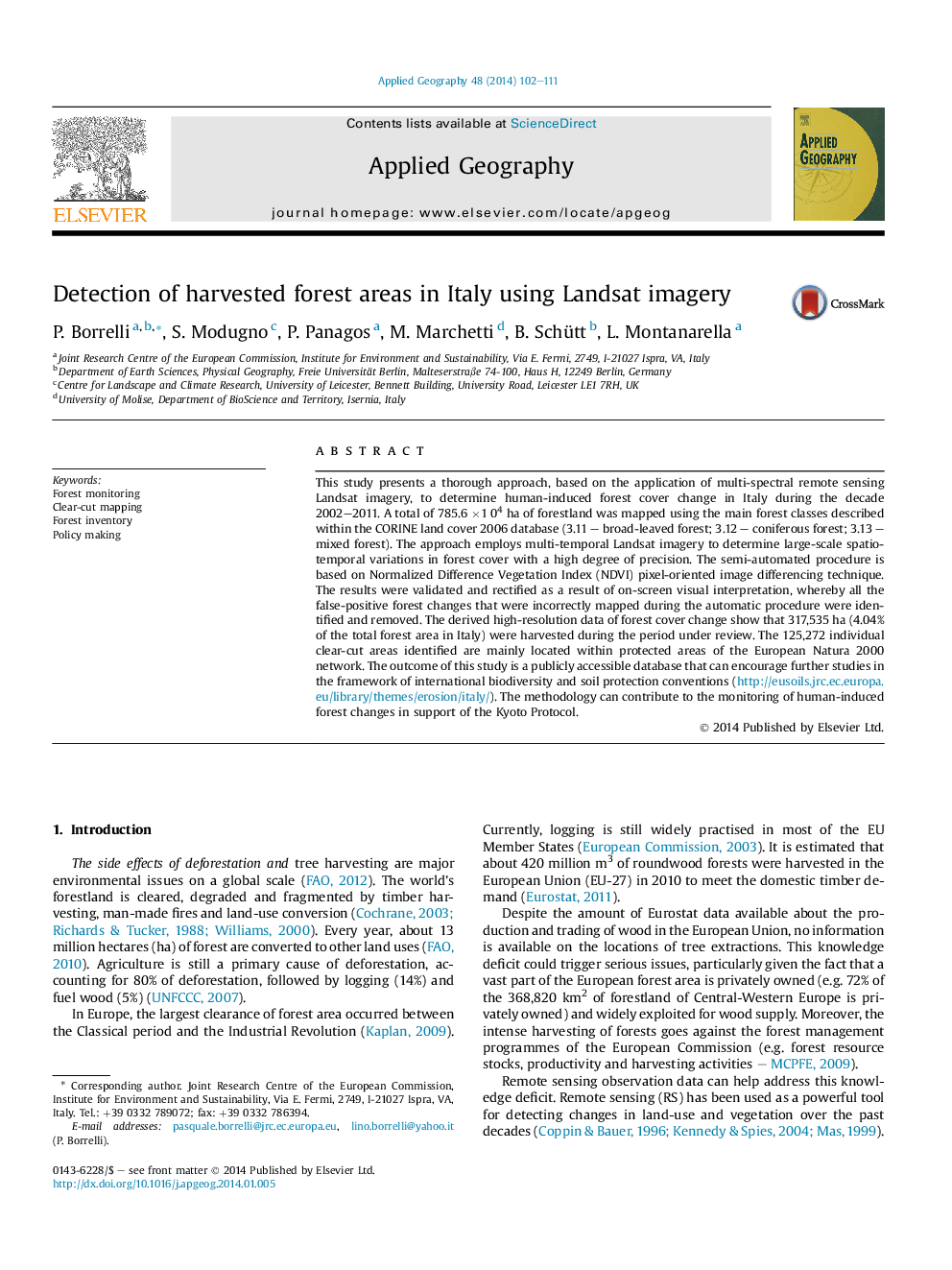| Article ID | Journal | Published Year | Pages | File Type |
|---|---|---|---|---|
| 83268 | Applied Geography | 2014 | 10 Pages |
•The paper deals with coppice harvest mapping in Italian forestlands.•A multi-temporal Landsat database with more than 400 images was employed.•Clear-cut areas larger than 0.5 ha were mapped across a ten-year period.•A robust validation and rectification procedure ensured a high mapping precision.•The study provides a publicly accessible database for future studies of forestland dynamics.
This study presents a thorough approach, based on the application of multi-spectral remote sensing Landsat imagery, to determine human-induced forest cover change in Italy during the decade 2002–2011. A total of 785.6 ×1 04 ha of forestland was mapped using the main forest classes described within the CORINE land cover 2006 database (3.11 – broad-leaved forest; 3.12 – coniferous forest; 3.13 – mixed forest). The approach employs multi-temporal Landsat imagery to determine large-scale spatiotemporal variations in forest cover with a high degree of precision. The semi-automated procedure is based on Normalized Difference Vegetation Index (NDVI) pixel-oriented image differencing technique. The results were validated and rectified as a result of on-screen visual interpretation, whereby all the false-positive forest changes that were incorrectly mapped during the automatic procedure were identified and removed. The derived high-resolution data of forest cover change show that 317,535 ha (4.04% of the total forest area in Italy) were harvested during the period under review. The 125,272 individual clear-cut areas identified are mainly located within protected areas of the European Natura 2000 network. The outcome of this study is a publicly accessible database that can encourage further studies in the framework of international biodiversity and soil protection conventions (http://eusoils.jrc.ec.europa.eu/library/themes/erosion/italy/). The methodology can contribute to the monitoring of human-induced forest changes in support of the Kyoto Protocol.
